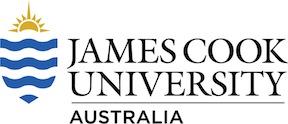Resources
ABC News
18 November 2014
Marine researchers have been using the annual spawning event on the Great Barrier Reef to test for the effects of dredge spoil and pesticides on coral reproduction.
The release of millions of coral larvae into reef waters provided a chance to replenish and regrow reefs that had been damaged or destroyed. Read more

The Conversation
03 September 2013
The world’s coral reefs will quickly dissolve if greenhouse gas emissions continue on current trends, a new simulation has found.
Greenhouse gases cause the ocean to become warmer and more acidic, which bleaches and kills coral reefs, as well as the underwater ecosystems that form around them. Read more
e-Atlas
26 March 2014
This animation shows the locations of Crown of Thorns Starfish (COTS) outbreaks on the Great Barrier Reef over a 28 year period as measured by the Long Term Monitorin Program (LTMP) from the Australian Institute of Marine Science (AIMS) using Manta Tow surveys. Each dot on the map represents a reef surveyed for COTS. Since reefs are not surveyed every year the animation combines the data over a 2 year moving window for achieve reasonable coverage of the GBR. Read more
ABC News
14 June 2013
Queensland National Parks Minister Steve Dickson says the crown of thorns starfish continues to be the biggest threat to the Great Barrier Reef.
Mr Dickson is today meeting coral reef researchers on Lizard island, north-east of Cooktown off far north Queensland. Read more

ABC News
22 April 2014
More than 250,000 crown-of-thorns starfish have been removed from the Great Barrier Reef off Queensland in the past two years, Federal Environment Minister Greg Hunt says.
The pest is considered to be one of the biggest threats to the reef and has traditionally been hard to destroy. Read more

The Age
06 October 2012
In 1969, the veteran TV journalist Bob Raymond produced a documentary, Life and Death on the Great Barrier Reef. In it, he broadcast spectacular images of the reef at its best, colourful and crowded with fishes.
Part-way through the report Raymond showed viewers a reef littered with the coral-killing crown-of-thorns starfish which were beginning their ''insidious march'' along the length of the Barrier Reef. Read more
Daily Mercury
27 July 2013
A WAR of spin has erupted between the coal industry and environmentalists over ports and dredging near the Great Barrier Reef, as an Airlie Beach diving instructor voices his concerns about new developments.
The debate between industry and green groups has reached fever pitch, with both sides alleging the other is trying to divert attention away from various threats to the reef's health. Read more
Brisbane Times
09 January 2014
A decision on whether to allow dredge spoil from the Abbot Point coal port to be dumped inside the Great Barrier Reef marine park should be delayed until after an inquiry into the Gladstone bund wall leak, conservationists and a Queensland Senator say.
Environment Minister Greg Hunt on Tuesday confirmed he had ordered an inquiry into how a bund wall, designed to prevent dredge spoil entering Gladstone's harbour, leaked in 2011-12. Read more

JCU
07 July 2014
Professor Helene Marsh – one of Australia’s leading experts on marine mammals has been named as one of the first four members of a new Threatened Species Scientific Committee.
Every year millions of dollars are spent in an attempt to reverse the trend in decline of Australia’s threatened species. Despite significant investment across all levels of Government, the private sector and non-government organisations, there are a growing number of native animals and plants facing the threat of extinction.
The committee will advise and assist Australia’s first Threatened Species Commissioner Mr Gregory Andrews to help address the growing threat of extinction of Australian species. Read more

Brisbane Times
10 January 2014
“There are a lot of impacts that are possible certainly whenever we are dredging large amounts of sediment. We have the potential for that sediment to move.
“It is being dug up, it circulates and what that does is, first of all, there can be things which are stored in these older sediments and whilst this is probably not going to be as bad as it was in Gladstone, there is still the potential for a lot of nitrogen and phosphorous, metals, pesticides – that sort of thing – to be present in those sediments and become available in the surrounding water. Read more




